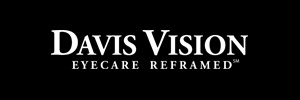Cataract is a common eye condition that can cause vision loss, especially as we age. Cataracts involve a clouding of the lens in the eye, which can blur vision and interfere with daily life. It’s a condition that often sneaks up quietly, sometimes without noticeable symptoms, until it affects your sight. But with regular eye exams, cataracts can be detected early, managed and treated to preserve your eye health.

In this post, Eyes on Norbeck discusses the different types of cataracts and the methods used by eye doctors to diagnose the condition.
Types of Cataracts
Cataracts vary so there’s no universal approach to the condition. The specific type you develop dictates the symptoms you experience and guides the treatment required.
Nuclear Cataracts
This type of cataract forms in the center (nucleus) of the lens and is often associated with aging. Nuclear cataracts develop slowly, causing gradual vision changes such as increased nearsightedness and reduced color perception.
Cortical Cataracts
Cortical cataracts occur in the lens cortex, the outer region surrounding the nucleus. These cataracts manifest as wedge-shaped opacities extending from the lens’s outer edge inward. Common symptoms include glare, halos around lights, and difficulty with contrast sensitivity, particularly in bright light conditions.
Posterior Subcapsular Cataracts
Posterior subcapsular cataracts form on the back surface of the lens capsule, directly behind the lens. They often develop more rapidly than other cataracts and can significantly impact near vision, especially in low-light settings. Individuals with posterior subcapsular cataracts may experience difficulty reading, glare sensitivity and poor night vision.
Congenital Cataracts
Congenital cataracts are present at birth or develop during early childhood. They can occur due to genetic factors, maternal infections during pregnancy or metabolic disorders. Prompt diagnosis and treatment are essential to prevent potential visual impairment and ensure healthy visual development in children with congenital cataracts.
Diagnosing Cataracts
Early diagnosis of cataracts by an optometrist is crucial for prompt and effective treatment. The diagnostic process includes the following:
Comprehensive Eye Examination
A comprehensive eye examination by a qualified optometrist or ophthalmologist is the cornerstone of a cataract diagnosis. This evaluation includes visual acuity testing, pupil dilation to examine the lens and retina, and an assessment of overall eye health.
Slit-Lamp Examination
During a slit-lamp examination, a specialized microscope allows for a detailed examination of the structures within the eye, including the lens. This enables the healthcare provider to visualize the location, size and severity of the cataract.
Visual Function Tests
Various visual function tests, such as contrast sensitivity testing and glare testing, help assess the impact of cataracts on visual performance. These tests provide valuable information to guide treatment decisions and monitor disease progression.
Optical Coherence Tomography (OCT)
OCT imaging technology utilizes light waves to create cross-sectional images of the eye’s structures, including the lens. OCTs can aid in the early detection and monitoring of cataracts by revealing subtle changes in lens density and clarity.
Treatment Options
Depending on the severity and impact on your vision, your eye care professional may recommend various treatment options, such as:
- Non-Surgical Approaches – These are mainly lifestyle adjustments, such as using brighter lights for reading and wearing anti-glare lenses.
- Prescription Changes – Updated eyeglasses or contact lenses enhance visual clarity.
- Cataract Surgery – Surgery may be recommended if the cataract significantly affects your daily activities. Modern cataract surgery is a safe and effective procedure involving removing and replacing the cloudy lens with an artificial intraocular lens (IOL).
Trust Eyes On Norbeck for Quality Eye Care
Maintaining routine eye exams, leading a healthy lifestyle and addressing vision issues early on are critical for good eye health. For a comprehensive eye check-up or to discuss any eye issues, call Eyes On Norbeck at (301) 238-7199 or visit our contact page.








